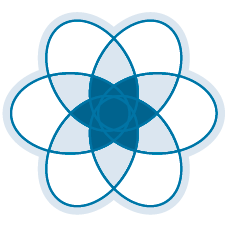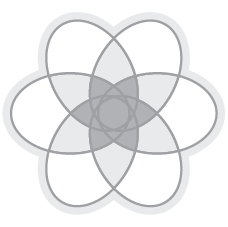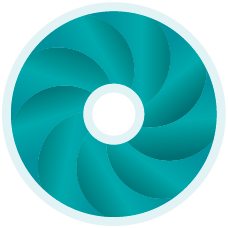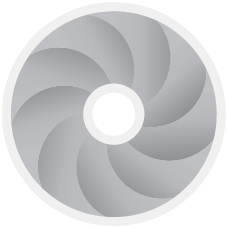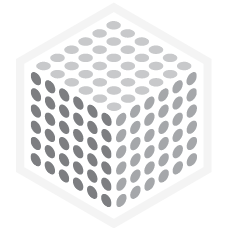Annex: goal, concept and production of Profiles
Mission
Undergraduate medical education in Switzerland is guided by the nationally agreed framework of learning objectives published by the Joint Commission of the Swiss Medical Schools (SMIFK/CIMS). This Commission decided in 2000 to establish a Swiss Catalogue of Learning Objectives for Undergraduate Medical Training (SCLO), which was based on the Dutch Blueprint and published in 20021. The SCLO had, and still has, two main regulatory purposes in Switzerland: first of all, it is an essential prerequisite for the accreditation of the curricula of the Swiss medical faculties by the Swiss Agency of Accreditation and Quality (AAQ); secondly, the SCLO defines the contents of the Federal Licensing Examination (FLE) that takes place at the end of the training curricula of the medical faculties of Switzerland (Ordinance on the Federal Examinations for University Medical Professions). It thus guarantees that the contents of the medical curricula in all medical faculties are aligned with the requirements stated in the Federal Act on Medical Professions (MedBG). In 2004, it was decided to proceed with a revision of the SCLO, which led to a second version, approved by the SMIFK/CIMS in 20082. Given the rapid evolution of the practice of medicine and medical education, the Commission decided to embark on a thorough, second reform of the SCLO, which has led to the development of the present Profiles document.
In summary, the aim of Profiles is to outline what is expected of the holder of a federal licence on the first day of his or her residency. Its main target audiences are the individuals in charge of the design and implementation of the curriculum in each faculty, the teachers and those designing the FLE, as well as the students themselves. This annex provides information on the conceptual framework that was used to develop the Profiles document.
A new era for the practice of medicine and a challenge for medical faculties
Over the last decades, the sectors of health and medicine have changed dramatically and will continue to do so. This evolution is on one hand linked to the transformation of medical practice, and on the other hand to demographic changes that are occurring in the population itself and within the medical profession. Both should influence the way in which medical students and doctors must be trained3-8. Indeed, physicians nowadays find themselves in an environment that is becoming increasingly technical and which involves imaging techniques or genetic and biological tests, which are becoming more and more sophisticated and available even to lay people. In high income countries in particular, patients are increasingly literate in the area of health9, and this is radically transforming the nature of the patient-doctor relationship; the concept of shared decision-making is a good example10 11. Moreover, many countries increasingly emphasize the issue of professionalism, including issues such as patient safety, adequate reactions to potential errors12 and attention to cost-effectiveness in prescribing tests, medication and treatment. In addition, the whole area of e-health, e.g. the use of information and communication technologies (ICTs) by physicians13, will impact the way in which they care for their patients, conduct research, educate the health workforce, track diseases and monitor public health initiatives; this will even be the case in low and middle income countries14 15. Finally, the era of big data and the development of the “omics” will allow for the merging of many medical and non-medical personal parameters. These will impact on both lifestyles and treatments, since they will modify the way in which patients and doctors look at their health and their diseases, leading to a more “personalized” medicine16. It will therefore be important to equip medical students with an excellent capacity to follow the scientific literature and develop sound competences in the critical appraisal of basic (and especially evidence-based) clinical research17.
Besides the evolution of medicine itself, demographic issues affect the delivery of health care. As mentioned in a recent report by the federal government18, Switzerland is faced with several challenges, such as the escalating cost of the health care system and a severe shortage of doctors in some disciplines, including primary care. Furthermore, there is an increasing incidence of chronic noncommunicable diseases (NCDs) and multimorbidity due to an ageing population. These emerging tendencies call for a high level of interprofessional collaboration and a capacity for doctors to integrate a great deal of bio-psychosocial information19 20. Physicians need to learn to work in teams, and respect the roles of each member of any group of professionals working together in specific situations, be it in an operating theatre, an ambulance or within a primary care setting21-25. Future doctors will need to reflect on and adapt to new models of care that allow for better integration of the many facets of a multimorbid patient, such as multi-professional consultations24 26-28. All these impressive transformations raise issues in the fields of ethics and medical humanities, and have important implications for the role of professionalism and accountability in the undergraduate and postgraduate training of doctors29-32. The preceding comments underline some of the challenges that medical faculties face with regard to the medical education of future doctors, and why it was felt necessary to significantly modify the training objectives of medical students. In other words, besides acquiring knowledge of basic medical sciences and an excellent insight into discipline-related pathologies as well as their diagnosis and treatment, medical students need to develop a high capacity for integration and adaptation. They should also be able to perceive how societal changes influence the practice of medicine and how to adapt to these changes3 5 29. Taking into account the vision of the Swiss Federal Council and the Federal Office of Public Health18, students will need to understand the importance of integration and accountability in their profession and should be able to address issues such as the persistence of inequities in healthcare, new infectious diseases, increasing environmental and behavioural risks and rapid demographic and epidemiological transitions as a result of migration.
Responding to the above-mentioned trends: new educational approaches to prepare doctors for their future career
As it is difficult to predict how doctors will work in ten or twenty years’ time, faculties of medicine around the world are faced with two important questions, i.e. what changes are needed in undergraduate medical education, and how faculties should ensure the continuing expertise of physicians 20 to 30 years into practice3 5 33-35. A major evolution in medical education has been the concept of outcome-based education, built on the idea that teaching formats should be aligned with learning outcomes36-40. In a similar way, a core aspect of the training curriculum of doctors is the acquisition by students of competencies6, defined as “an observable ability of a health professional, integrating multiple components such as knowledge, skills, values, and attitudes”4 5 41-44. More recently, it has been argued that acquisition of single competences does not necessarily guarantee that young doctors entering residency will adequately perform professional tasks, which usually call for an integration of several competences. This concern has led to the creation of a new concept, namely that of Entrustable Professional Activities EPA45-50.
An EPA can be defined as a “unit of professional practice or task that an individual can be trusted to perform unsupervised in a given health care context, once sufficient ability has been demonstrated”50-53. Ideally, an EPA is executable independently within a time frame, observable and measurable in process and outcome, and suitable for entrustment decisions, provided that a given individual is really able to perform the task or the professional activity in a partially or totally autonomous way51 54. It is clear that this “entrustability” is acquired progressively and that the instructor has to assess the trainee’s performance over time before he can be convinced that the student or resident is totally entrustable. Indeed, ten Cate suggests five levels of supervision, from one (no permission to act) to five (permission to provide training to juniors)54. It is obvious that, as EPAs represent tasks, they cannot encompass all the facets of medical activities, such as professionalism, ethics or life-long learning.
As an example, a generic EPA states that the learner (a medical student) is able to “obtain a complete and accurate history in an organized fashion, taking into account the patient’s expectation, complaints and situation”. This requires a series of skills which should be integrated in performing this task, such as good communication skills, a capacity to adapt to the mental health status and cognitive skills of the patient, as well as a clear appraisal of what the symptoms and complaints suggest in terms of the most important questions to ask.
The concept of EPAs was first introduced at the level of postgraduate training, e.g. inserting a catheter, performing an appendectomy, a delivery or a hip replacement, with a gradual increase in complexity as residents become more and more experienced; it is currently used in many disciplines and countries55. Recently, it was suggested that the EPA framework should also be applied to undergraduate training50 53, with the objective of providing an integrative step-by-step vision of the practice of medicine, a vision that involves several disciplines, which is increasingly common in cases such as systemic diseases or cancer, or among older people who suffer from multiple diseases. Students could thus be invited to register their progress in a portfolio, which could be used later at the postgraduate level54 56.
In summary, the introduction of EPAs in the Profiles document potentially introduces a paradigm shift in modifying the behaviour of both students and mentors: “entrustability” must be assessed longitudinally, the evaluation being based on a repeated set of observations registered over time by the mentor(s) and by other members of the team in real patient situations. It implies the active participation of the learner, who must develop his sense of responsibility, his competences and an awareness of his limitations, e.g. under which circumstances he can perform a task without jeopardizing the health of the patient, or when he needs to ask for supervision or advice. Trust is linked with the autonomy of the student and his ability to evaluate his capacity to deal with any situation and his ability to grasp the responsibilities of a physician in various situations.
One could say that in stressing the importance of trust, EPAs focus less on what has been acquired in the past by the learner than on what he will be able to do in the future as a responsible, autonomous professional.
Clearly, although the Federal Licensing Examination will address the student’s expertise in specific clinical situations through OSCEs, it will not allow for a true assessment of autonomy and entrustability, this being the task of the faculties at the master level, during clinical clerkships and bedside teaching and monitoring. Some Swiss faculties, like some faculties in other parts of the world, have already foreseen the use of a portfolio that will allow students to monitor their progress in the acquisition of skills and EPAs over time57.
Process: a new document to define the objectives, structure and content of the medical curriculum in Switzerland
The SMIFK/CIMS mandated a work group (WG) of experts, listed at the end of this annex, to develop the new document. The WG included younger and older spokespersons from each faculty and from the main medical disciplines, as well as representatives of the Federal Office of Public Health, the Swiss Medical Students' Association (SWIMSA) and the Swiss Association of Residents and Chief Residents (VSAO/ASMAC). The WG has worked on defining the needs of future doctors, what is expected from them and accordingly what should be expected from the document, reflecting, as others have done before35 58 59, on how the vision, the structure and the content of the new document could meet the challenges that the medical profession will face in the future. The group has regularly reviewed and monitored the progress of the Profiles document. The reflections of the WG have been enriched by several other procedures. Over the years 2013-2015, the President of the WG has met on two occasions with representatives of the five Swiss faculties involved in medical education to discuss their expectations. Moreover, on five occasions, the vice deans of the medical faculties have met the President of the WG for in-depth exchanges about the structure, content and progress of the document. The content of Profiles is also influenced by several formal and informal exchanges with colleagues and experts from faculties within and outside Switzerland.
Moreover, the format and content of Profiles is inspired by a review of recent publications tackling the area of medical education, in particular documents such as the UK’s “Tomorrow’s doctors” document35, the E.U. Tuning Project60 and the new Dutch framework61. The Royal College of Physicians and Surgeons of Canada agreed that the description of the main roles of physicians, the well-known CanMEDS document62 could be used as a basis for drafting the first chapter of Profiles. The Association of American Medical Colleges also agreed that their document “Core Entrustable Professional Activities for Entering Residencys be used to develop the content of Chapter 2 (EPAs).
Profiles aims to reflect these numerous exchanges and to address the changes that the medical field and professions face now and in the future. Notably, the Profiles WG has been requested by the Federal Office of Public Health to implement new items as mentioned by the Federal Act on Medical Professions or identified as crucial issues for the future in the “Health 2020” document18, such as complementary medicine, nosocomial infections, palliative care, shared decision-making, patient safety, equity in medicine and e-health, to name but a few.
The broad goal of this final version of Profiles is to outline what is expected of the holder of a federal license on the first day of his residency. Its main target audiences are the individuals responsible for the design and implementation of the curriculum in each faculty, the teaching faculties as well as the federal board of examiners (“Prüfungskommission” / PK) in charge of designing the structure and content of the Federal Licensing Examination. In addition, Profiles should assist students in preparing themselves for their career and integrating their future roles as doctors. The document is concise and much shorter than the preceding ones, and written with a friendly, integrative and prioritizing approach. Profiles stresses issues such as evidence-based clinical reasoning, communication skills, an interdisciplinary approach to solving medical symptoms and situations, together with professionalism and accountability. It leaves the faculties free to choose how they wish to cover the fields of medicine and health.
The Profiles acronym that has been adopted by the group of experts to denominate the new document summarizes these intentions: Principal Relevant Objectives and Framework for Integrative Learning and Education in Switzerland. In other words, this new version is no longer just a "catalogue" but rather a set of Principal Relevant Objectives for the training of medical students; it provides a conceptual framework with clinical, public health and ethical situations that bridge disciplines, and includes a series of Integrated competences and skills in the form of Entrustable Professional Activities, which foster new Learning methods and, more globally, a higher level of medical Education. This does not mean that basic sciences and specific discipline-related objectives will not be taught any more, but rather that they should be learned by the student in the context of an integrated approach that corresponds to the reality of medical practice.
As illustrated by the graphic below, all the objectives and situations apply to any age group, to any set of circumstances (e.g. acute care / chronic care) and to any type of setting. Also, the general objectives of Chapter 1, the entrustable professional activities (EPAs) described in Chapter 2 and the situations listed in Chapter 3 as starting points are closely interconnected. To achieve the expected level of expertise, the student must master the corresponding discipline-related knowledge and skills, and must also adopt the attitude appropriate to the circumstances.
##profilesfigure##
Profiles has three interdependent chapters of equal importance:
- A first chapter listing a series of learning objectives related to the different roles of doctors, inspired by the CanMEDs Roles, which are in worldwide use.
- A second chapter presenting a set of entrustable professional activities (EPAs) reflecting the main medical tasks that a physician must be able to perform autonomously on the first day of his residency
- A third chapter providing about 265 common clinical situations that a doctor is expected to deal with after passing the Swiss Federal Licensing Examination
References
- 1 Bürgi H, Bader C, Bloch R, Bosman F, Horn B, Im Hof V, et al. Swiss Catalogue of Learning Objectives for Undergraduate Medical Training. Bern: Joint Commission of the Swiss Medical Schools; 2002.
- 2 Bürgi H, Rindlisbacher B, Bader C, Bloch R, Bosman F, al. Swiss Catalogue of Learning Objectives for Undergraduate Medical Training. Bern: Joint Commission of the Swiss Medical Schools; 2008.
- 3 Bhutta ZA, Chen L, Cohen J, Crisp N, Evans T, Fineberg H, et al. Education of health professionals for the 21st century: a global independent Commission. Lancet. 2010;375(9721):1137-8.
- 4 Frank JR, Snell LS, ten Cate O, Holmboe ES, Carraccio C, Swing SR, et al. Competency-based medical education: theory to practice. Med Teach. 2010;32(8):638-45.
- 5 Frenk J, Chen L, Bhutta ZA, Cohen J, Crisp N, Evans T, et al. Health professionals for a new century: transforming education to strengthen health systems in an interdependent world. Lancet. 2010;376(9756):1923-58.
- 6 Hawkins R, Welcher C, Holmboe E, Kirk L, Norcini J, Simons KB, et al. Implementation of competency-based medical education: are we addressing the concerns and challenges? Med Educ. 2015;49:1086-102.
- 7 Neville AJ, Norman GR. PBL in the undergraduate MD program at McMaster University: three iterations in three decades. Acad Med. 2007;82(4):370-4.
- 8 Skochelak S, Stack S. Creating the Medical Schools of the Future. Acad Med. 2017;92:16-9.
- 9 Kickbusch I, Pelikan J, Tsouros A. Health Literacy, the solid facts. Geneva: World Health Organization; 2013.
- 10 Lillie SE, Partin MR, Rice K, Fabbrini AE, Greer NL, Patel SS, et al. The Effects of Shared Decision Making on Cancer Screening - A Systematic Review. Washington (DC): US Department of Veterans Affairs; 2014.
- 11 McNutt RA. Shared medical decision making: problems, process, progress. JAMA. 2004;292(20):2516-8.
- 12 Schwappach D, Gehring K. Quand le silence est dangereux. Bull Med Suisses. 2015;96(38):1351-4.
- 13 Bollinger R, Chang L, Jafari R, O'Callaghan T, Ngatia P, Settle D, et al. Leveraging information technology to bridge the health workforce gap. Bull World Health Organ. 2013;91(11):890-2.
- 14 Dumiak M. E-health's future frontiers. Bull World Health Organ. 2012;90(5):328-9.
- 15 Piette JD, Lun KC, Moura LA, Jr., Fraser HS, Mechael PN, Powell J, et al. Impacts of e-health on the outcomes of care in low- and middle-income countries: where do we go from here? Bull World Health Organ. 2012;90(5):365-72.
- 16 Panahiazar M, Taslimitehrani V, Jadhav A, Pathak J. Empowering Personalized Medicine with Big Data and Semantic Web Technology: Promises, Challenges, and Use Cases. Proc IEEE Int Conf Big Data. 2014;2014:790-5.
- 17 Crabtree EA, Brennan E, Davis A, Squires JE. Connecting Education to Quality: Engaging Medical Students in the Development of Evidence-Based Clinical Decision Support Tools. Acad Med. 2017;92(1):83-6.
- 18 Federal Office of Public Health. Health 2020 : global strategy. Bern; 2013.
- 19 Haibach JP, Beehler GP, Dollar KM, Finnell DS. Moving toward integrated behavioral intervention for treating multimorbidity among chronic pain, depression, and substance-use disorders in primary care. Med Care. 2014;52(4):322-7.
- 20 Smith SM, Soubhi H, Fortin M, Hudon C, O'Dowd T. Interventions for improving outcomes in patients with multimorbidity in primary care and community settings. Cochrane Database Syst Rev. 2012(4):CD006560.
- 21 Gallant S, Clerc M, Gachoud D, Morin D. Apprendre ensemble pour travailler ensemble : l’éducation interprofessionnelle, un mythe ou une réalité ? Rech Soins Infirm. 2011(106):40-6.
- 22 Michaud PA, Luthi FT, Clerc M, Gachoud D, Chapuis J, Allin AC, et al. L’éducation interprofessionnelle pour tous... Une expérience de sensibilisation pour des étudiants vaudois en formation prégraduée. Rev Med Suisse. 2011;7(319):2363-5.
- 23 Olson R, Bialocerkowski A. Interprofessional education in allied health: a systematic review. Med Educ. 2014;48:236-46.
- 24 Thomas L, Galla C. Building a culture of safety through team training and engagement. BMJ Qual Saf. 2013;22(5):425-34.
- 25 Smith SM, Soubhi H, Fortin M, Hudon C, O'Dowd T. Managing patients with multimorbidity: systematic review of interventions in primary care and community settings. BMJ. 2012;345:e5205.
- 26 Hawkes N. New models of healthcare will replace nearly three quarters of NHS by 2024, report says. BMJ. 2014;348:g4088.
- 27 Wright ES. Biomedical models and healthcare systems: new model will be useful if it alters allocation of resources. BMJ. 2005;330(7488):419.
- 28 Corrigan P, Parish M. Going with change: Allowing new models of healthcare to be provided for NHS patients. London: Reform; 2014.
- 29 Li ST, Srinivasan M, Der-Martirosian C, Kravitz RL, Wilkes MS. Developing personal values: trainees' attitudes toward strikes by health care providers. Acad Med. 2011;86(5):580-5.
- 30 Doukas DJ, Kirch DG, Brigham TP, Barzansky BM, Wear S, Carrese JA, et al. Transforming educational accountability in medical ethics and humanities education toward professionalism. Acad Med. 2015;90(6):738-43.
- 31 Eikelboom JI, ten Cate OT, Jaarsma D, Raat JA, Schuwirth L, van Delden JJ. A framework for the ethics review of education research. Med Educ. 2012;46(8):731-3.
- 32 Wynia MK, Papadakis MA, Sullivan WM, Hafferty FW. More than a list of values and desired behaviors: a foundational understanding of medical professionalism. Acad Med. 2014;89(5):712-4.
- 33 Asch DA, Weinstein DF. Innovation in medical education. N Engl J Med. 2014;371(9):794-5.
- 34 Epstein RM, Hundert EM. Defining and assessing professional competence. JAMA. 2002;287(2):226-35.
- 35 General Medical Council. Tomorrow's Doctors. Outcomes and standards for undergraduate medical education. Manchester; 2009.
- 36 Biggs J. Enhancing teaching through constructive alignment. High Educ. 1996;32(3):347-64.
- 37 Reeves S, Fox A, Hodges BD. The competency movement in the health professions: ensuring consistent standards or reproducing conventional domains of practice? Adv Health Sci Educ Theory Pract. 2009;14(4):451-3.
- 38 Schuwirth L, Cantillon P. The need for outcome measures in medical education. BMJ. 2005;331(7523):977-8.
- 39 Shumway JM, Harden RM, Association for Medical Education in Europe. AMEE Guide No. 25: The assessment of learning outcomes for the competent and reflective physician. Med Teach. 2003;25(6):569-84.
- 40 Hautz SC, Hautz WE, Feufel MA, Spies CD. What makes a doctor a scholar: a systematic review and content analysis of outcome frameworks. BMC Med Educ. 2016;16:119.
- 41 Frank JE. The CanMEDS 2005 physician competency framework. Better standards. Better physicians. Better care. Ottawa: Office of Education, the Royal College of Physicians and Surgeons of Canada; 2005.
- 42 Hurtubise L, Roman B. Competency-based curricular design to encourage significant learning. Curr Probl Pediatr Adolesc Health Care. 2014;44(6):164-9.
- 43 ten Cate O, Billett S. Competency-based medical education: origins, perspectives and potentialities. Med Educ. 2014;48(3):325-32.
- 44 Tekian A, Hodges BD, Roberts TE, Schuwirt L, Norcini J. Assessing competencies using milestones along the way. Med Teach. 2015;37:399-402.
- 45 Association of American Medical Colleges. Core Entrustable Professional Activities for Entering Residency. Washington DC: Association of American Medical Colleges; 2014.
- 46 Hauer KE, Soni K, Cornett P, Kohlwes J, Hollander H, Ranji SR, et al. Developing entrustable professional activities as the basis for assessment of competence in an internal medicine residency: a feasibility study. J Gen Intern Med. 2013;28(8):1110-4.
- 47 ten Cate O, Chen HC, Hoff RG, Peters H, Bok H, van der Schaaf M. Curriculum development for the workplace using Entrustable Professional Activities (EPAs): AMEE Guide No. 99. Med Teach. 2015;37(11):983-1002.
- 48 Carraccio C, Englander R, Holmboe ES, Kogan JR. Driving Care Quality: Aligning Trainee Assessment and Supervision Through Practical Application of Entrustable Professional Activities, Competencies, and Milestones. Acad Med. 2016;91(2):199-203.
- 49 El-Haddad C, Damodaran A, McNeil HP, Hu W. The ABCs of entrustable professional activities: an overview of 'entrustable professional activities' in medical education. Intern Med J. 2016;46(9):1006-10.
- 50 Chen HC, McNamara M, Teherani A, Cate OT, O'Sullivan P. Developing Entrustable Professional Activities for Entry Into Clerkship. Acad Med. 2016;91(2):247-55.
- 51 ten Cate O. AM last page: what entrustable professional activities add to a competency-based curriculum. Acad Med. 2014;89(4):691.
- 52 ten Cate O, Scheele F. Competency-based postgraduate training: can we bridge the gap between theory and clinical practice? Acad Med. 2007;82(6):542-7.
- 53 Chen HC, van den Broek WE, ten Cate O. The case for use of entrustable professional activities in undergraduate medical education. Acad Med. 2015;90(4):431-6.
- 54 ten Cate O. Nuts and bolts of entrustable professional activities. J Grad Med Educ. 2013;5(1):157-8.
- 55 Englander R, Carraccio C. From theory to practice: making entrustable professional activities come to life in the context of milestones. Acad Med. 2014;89(10):1321-3.
- 56 ten Cate O, Young JQ. The patient handover as an entrustable professional activity: adding meaning in teaching and practice. BMJ Qual Saf. 2012;21 Suppl 1:i9-12.
- 57 Hall P, Byszewski A, Sutherland S, Stodel EJ. Developing a sustainable electronic portfolio (ePortfolio) program that fosters reflective practice and incorporates CanMEDS competencies into the undergraduate medical curriculum. Acad Med. 2012;87(6):744-51.
- 58 Pearson DJ, McKinley RK. Why tomorrow's doctors need primary care today. J R Soc Med. 2010;103(1):9-13.
- 59 ten Cate O. What Is a 21st-Century Doctor? Rethinking the Significance of the Medical Degree. Acad Med. 2014;89:966-9.
- 60 Cumming A, Ross M. The Tuning Project : Outcomes/ Competences for Undergraduate Medical Education in Europe. Edinburgh: European Community; 2008.
- 61 van Herwaarden CLA, Laan RFJM, Leunissen RRM. The 2009 Framework for Undergraduate Medical Education in the Netherlands. Utrecht: Dutch Federation of University Medical Centres; 2009.
- 62 Frank J, Snell L, Sherbino J. CanMEDS 2015: Physician Competency Framework. Ottawa: Royal College of Physicians and Surgeons of Canada; 2015.
